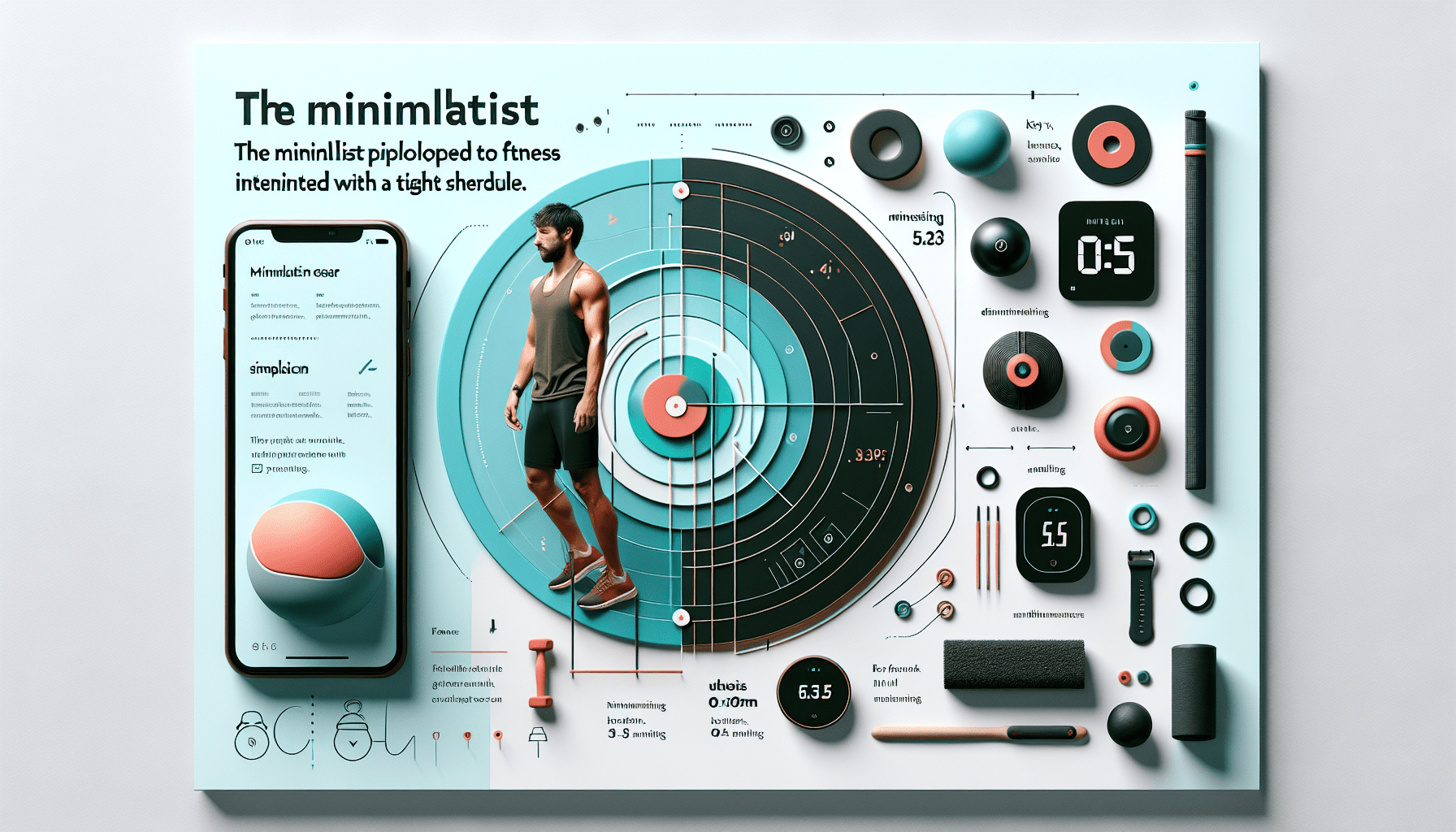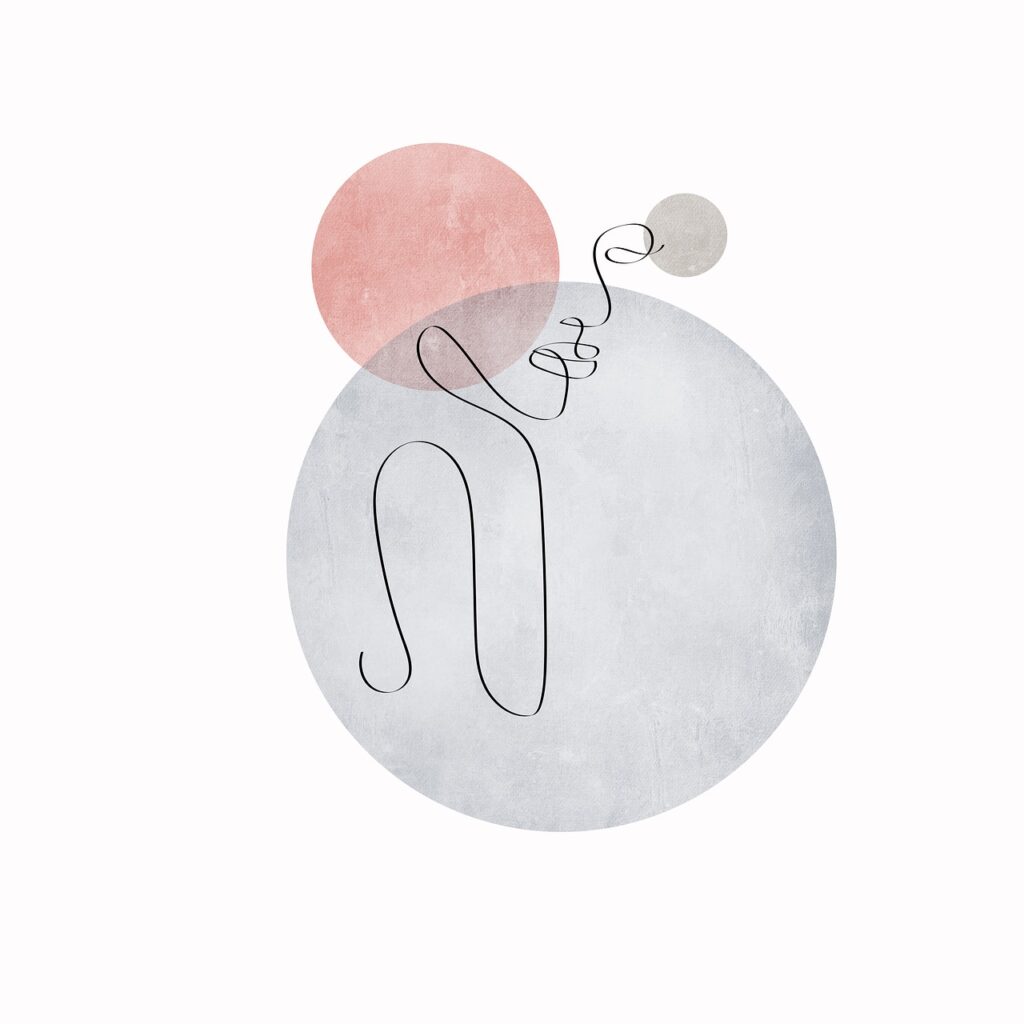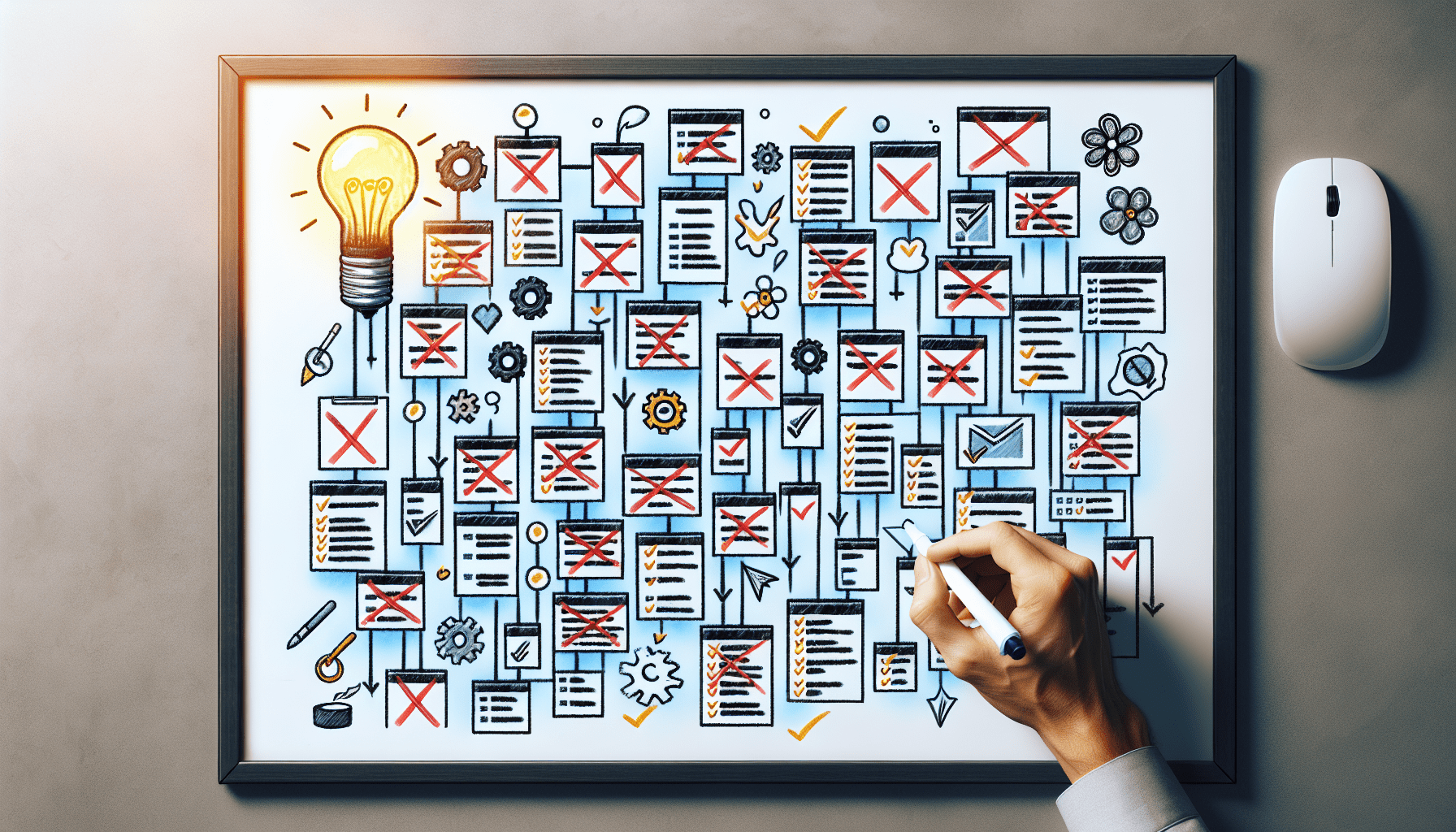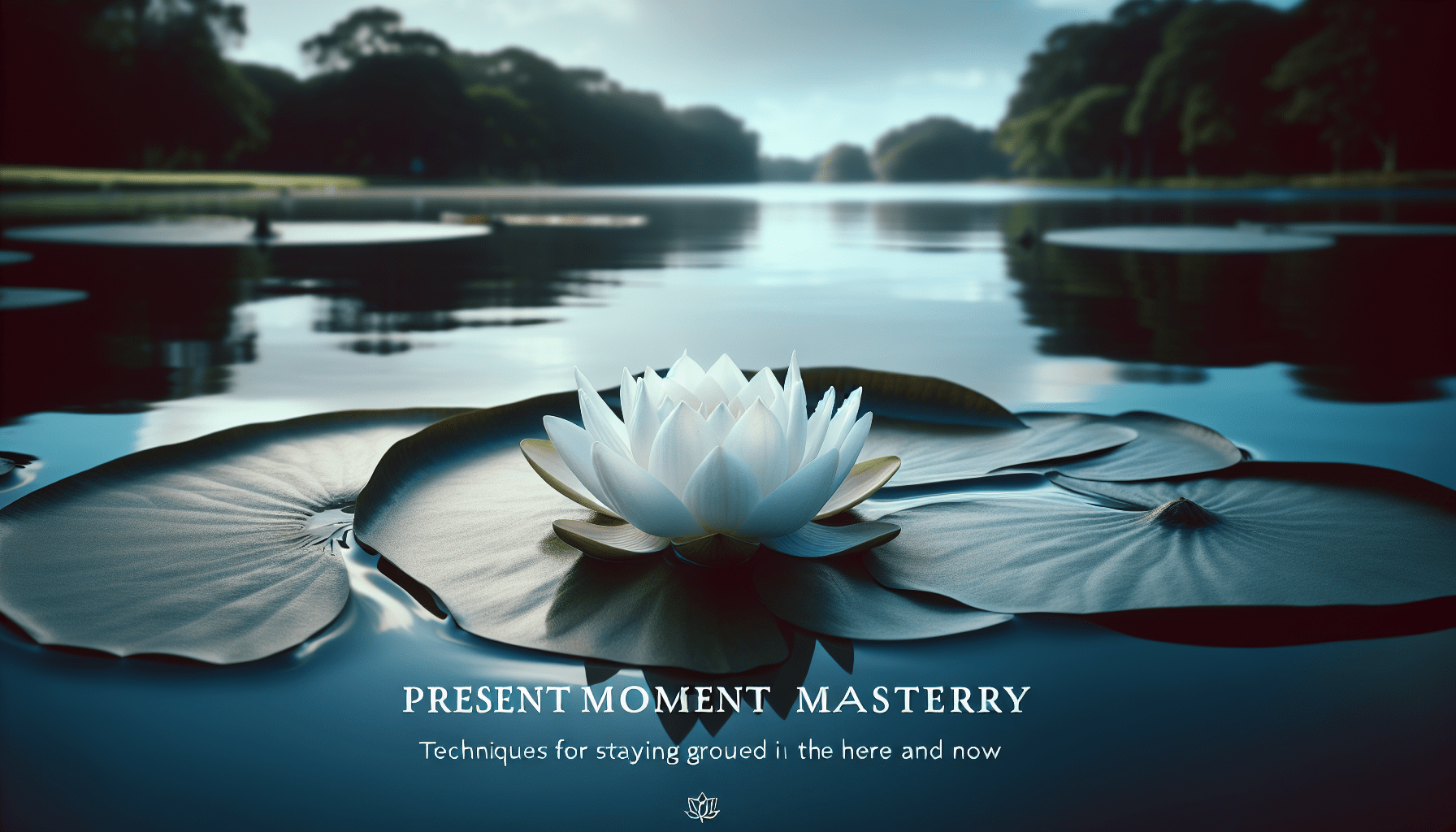
Achieving Effortless Flow: The Role Of Simplicity In Peak Performance

Imagine effortlessly gliding through your daily tasks, your mind focused and clear, your actions seamless and precise. This is the state of flow, a mental state where time seems to fly by and productivity soars. In the pursuit of peak performance, simplicity plays a crucial role. By simplifying our environment, our thoughts, and our actions, we can unlock the power of flow and achieve optimal performance in any endeavor. In this article, we will explore the role of simplicity in peak performance and uncover practical strategies to cultivate a state of effortless flow in your life. So, get ready to embark on a journey towards greater clarity, productivity, and fulfillment.

Understanding Flow
Definition of flow
Flow is a state of optimal performance and engagement, where you are fully immersed in a task and feel a sense of energized focus and enjoyment. It is a mental state where time seems to pass quickly and you lose track of your surroundings. In flow, you are completely absorbed in what you are doing, and your skills are perfectly matched to the challenge at hand.
Characteristics of flow
There are several characteristics that define the state of flow. These include intense focus and concentration, a sense of time distortion, a loss of self-consciousness, a feeling of control and mastery, and a high level of enjoyment and fulfillment. When you are in flow, you experience a deep sense of satisfaction and intrinsic motivation, making your work feel effortless and enjoyable.
Importance of flow in peak performance
Flow is crucial for achieving peak performance in any field or domain. When you are in a state of flow, you are able to perform at your best, tap into your creativity, and reach a heightened level of productivity. Flow is associated with improved learning, enhanced problem-solving abilities, and increased innovation. By understanding and cultivating flow, you can unlock your full potential and consistently achieve your highest level of performance.
The Concept of Simplicity
Definition of simplicity
Simplicity refers to the act of reducing complexity and making things easier, clearer, and more streamlined. It involves removing unnecessary elements, distractions, and complications. Simplicity is not about reducing tasks or avoiding challenges, but rather about finding the most efficient and effective way to achieve your goals without unnecessary complexities.
Relationship between simplicity and flow
Simplicity and flow go hand in hand. When things are simple and clear, it becomes easier for you to focus and engage fully in your tasks. By eliminating unnecessary complexities, distractions, and cognitive load, you increase your chances of entering a state of flow. Simplicity allows you to direct your energy towards what truly matters, enabling you to achieve a higher level of performance and experience greater satisfaction in your work.
Benefits of simplicity in peak performance
Embracing simplicity in peak performance offers a range of benefits. It helps reduce stress and overwhelm, allowing you to work with clarity and ease. Simplicity allows for better decision-making, as it eliminates unnecessary options and simplifies the thought process. It also improves efficiency and productivity by minimizing wasted time and effort. Ultimately, simplicity creates an environment that is conducive to flow, enabling you to reach your highest level of performance consistently.

Eliminating Complexity
Identifying and eliminating unnecessary tasks
One of the first steps in simplifying your work and reducing complexity is to identify and eliminate unnecessary tasks. Take a step back and assess your responsibilities, projects, and daily routines. Are there any tasks that do not align with your goals or contribute to your overall performance? By eliminating these tasks, you free up valuable time and mental energy for more important and meaningful work.
Streamlining processes and routines
Streamlining processes and routines is another effective strategy for eliminating complexity. Look for ways to automate or simplify repetitive tasks and workflows. Invest in tools and technology that can streamline your work processes and save you time. Evaluate your daily routines and identify any areas that could be simplified or optimized. By streamlining your processes, you create a smoother and more efficient workflow that allows for greater focus and productivity.
Simplifying decision-making
Decision-making can often become a source of complexity and overwhelm. Simplify your decision-making process by establishing clear criteria for evaluating options and making choices. Learn to prioritize and focus on what truly matters. Avoid unnecessary deliberation and analysis paralysis by making decisions based on your intuition and expertise. By simplifying your decision-making, you can make faster and more effective choices, freeing up mental energy for more important tasks.
Reducing Cognitive Load
Breaking down complex tasks into smaller steps
Complex tasks can be overwhelming and lead to a high cognitive load. Break down these tasks into smaller, more manageable steps. By focusing on one step at a time, you can reduce the mental burden and make progress towards your goals more easily. Breaking down complex tasks also provides a sense of achievement and momentum, boosting your confidence and motivation.
Creating a clear and organized work environment
A cluttered and disorganized work environment can add unnecessary cognitive load and hinder your ability to focus. Create a clear and organized work environment by decluttering your physical space and establishing systems for organizing your digital files and tools. Keep only the essentials within reach and remove any distractions that might disrupt your concentration. A clean and organized workspace promotes clarity and allows you to work more efficiently.
Minimizing distractions and interruptions
Distractions and interruptions are major contributors to cognitive load and can disrupt your flow. Minimize distractions by silencing notifications, closing unnecessary tabs or applications, and establishing dedicated periods of focused work. Create a system for managing interruptions, such as setting specific times for checking emails or holding office hours for colleagues to approach you with questions. By minimizing distractions and interruptions, you create an environment that supports deep concentration and flow.

Embracing Minimalism
Focusing on essential tasks and goals
Minimalism is about focusing on what truly matters and eliminating the non-essential. Prioritize your tasks and goals, and focus your time and energy on those that align with your overall objectives. Avoid spreading yourself too thin by taking on too many commitments or projects. By embracing minimalism, you can direct your efforts towards the most important tasks and achieve greater impact and success.
Removing clutter and distractions
Physical and mental clutter can impede your performance and hinder your ability to enter a state of flow. Regularly declutter your physical space, removing any unnecessary objects or items that do not serve a purpose. Minimize digital clutter by organizing your files and applications, and deleting or archiving anything that is no longer needed. Additionally, reduce mental clutter by practicing mindfulness and cultivating a focused and clear mindset.
Adopting a minimalist mindset
Adopting a minimalist mindset means embracing simplicity and letting go of attachments to material possessions or unnecessary complexities. It is about seeking fulfillment through experiences and relationships rather than through accumulation. By adopting a minimalist mindset, you can reduce the desire for more and create space for what truly matters, allowing you to focus on your goals and achieve peak performance.
Finding Flow through Simplicity
Creating a simple and structured workflow
A simple and structured workflow is key to finding flow in your work. Break your projects and tasks into manageable steps, and create a clear plan or roadmap for completing them. Organize your work in a way that makes sense to you, whether it’s through to-do lists, calendars, or project management software. By having a structured workflow, you can navigate through your tasks seamlessly and maintain a steady momentum towards your goals.
Developing effective habits and rituals
Habits and rituals can help create a sense of rhythm and routine, promoting flow in your work. Develop effective habits that support your productivity and performance, such as establishing a consistent sleep schedule or incorporating regular exercise into your routine. Create rituals that help you transition into a focused state of mind, such as practicing deep breathing exercises or setting intentions before starting your work. By incorporating these habits and rituals into your daily life, you can cultivate a mindset and environment conducive to flow.
Enhancing focus and concentration
Focus and concentration are essential for achieving flow. Find techniques that enhance your focus and help you stay present in the moment. This could include practicing mindfulness meditation, using time-blocking methods to allocate dedicated periods for focused work, or utilizing techniques such as the Pomodoro Technique. Continuously fine-tune your ability to sustain your attention and remain fully engaged in the task at hand. By enhancing your focus and concentration, you can deepen your experience of flow and optimize your performance.
Simplicity in Communication and Collaboration
Clear and concise communication
Clear and concise communication is vital for effective collaboration and reducing unnecessary complexity. Simplify your message by using straightforward and concise language, avoiding jargon or unnecessary technical terms. Provide clear instructions and expectations to avoid confusion or misinterpretation. Foster an open and transparent communication culture, where feedback and information flow freely. By simplifying communication, you can promote effective collaboration and streamline the exchange of ideas and information.
Reducing unnecessary meetings and emails
Meetings and excessive emails can often contribute to complexity and hinder productivity. Reduce the number of meetings by only scheduling those that are truly necessary and have clear objectives. For other matters, consider alternative communication channels like brief check-ins or utilizing project management software. Similarly, minimize email overload by using clear subject lines and being mindful of who really needs to be included in the conversation. By reducing unnecessary meetings and emails, you can create more focused and efficient communication practices.
Promoting teamwork and synergy
Effective teamwork and synergy rely on simplicity and alignment. Foster a team culture that encourages collaboration, open communication, and collective problem-solving. Create clear roles and responsibilities, ensuring that everyone understands their contributions and expectations. Build a supportive environment where each team member’s strengths are leveraged and ideas are valued. By promoting teamwork and synergy, you can achieve higher levels of performance and collective flow.
Simplicity in Goal Setting
Setting clear and attainable goals
Simplicity in goal setting involves setting clear and attainable objectives that are aligned with your overall vision and purpose. Define specific and measurable goals that allow you to track your progress and achievements. Break down larger goals into smaller milestones or tasks, making them easier to manage and accomplish. By setting clear and attainable goals, you create a sense of direction and motivation, enabling you to experience flow throughout the journey.
Prioritizing and focusing on key objectives
Simplifying goal setting also requires prioritization and focus. Identify the key objectives that will have the most significant impact on your performance or contribute to your overall vision. Let go of less important or distracting goals that may pull you away from your core focus. By prioritizing and refining your objectives, you can cultivate a sense of clarity and single-mindedness that enhances your ability to achieve flow.
Tracking progress and making adjustments
Regularly tracking your progress and making necessary adjustments is an essential part of simplified goal setting. Review your goals periodically, assess your progress, and make any necessary changes to keep yourself aligned with your vision. Celebrate milestones and achievements along the way to maintain motivation and momentum. By continuously monitoring and adapting your goals, you can maintain a sense of purpose and progress, facilitating the experience of flow.
Overcoming Complexity Bias
Understanding the tendency to value complexity
Complexity bias refers to our inclination to perceive complex solutions or strategies as more effective or valuable than simple ones. It is natural to assume that complex tasks or processes are more sophisticated or advanced, but this bias can hinder our ability to achieve peak performance. By understanding the tendency towards complexity bias, we can challenge our beliefs and open ourselves up to the benefits of simplicity.
Challenging assumptions and beliefs about complexity
To overcome complexity bias, it is essential to challenge our assumptions and beliefs about complexity. Question whether complex solutions or approaches are truly necessary or if there are simpler alternatives that can achieve the same results. Be willing to experiment and test simpler methods, and evaluate their effectiveness objectively. By challenging our assumptions and beliefs, we can break free from the constraints of complexity bias and unlock the power of simplicity.
Embracing simplicity as a catalyst for peak performance
Embracing simplicity as a catalyst for peak performance involves recognizing the value and potential of simple solutions, strategies, and approaches. Understand that simplicity does not equate to lack of sophistication or effort, but rather to effectiveness, clarity, and ease. Cultivate a mindset that embraces simplicity and seeks simplicity as the default approach. By embracing simplicity, you can harness its power as a catalyst for achieving and sustaining peak performance.
The Balancing Act: Simplicity and Complexity
Recognizing the need for complexity in certain areas
While simplicity is crucial for peak performance, it is important to recognize that certain areas may require a certain level of complexity. Some tasks or projects naturally involve intricate details, analysis, or expert knowledge. It is essential to balance simplicity with the level of complexity required for each specific task or context. By recognizing when complexity is necessary, you can apply it strategically and avoid overcomplicating areas where simplicity is more suitable.
Striking a balance between simplicity and complexity
The key to achieving optimal performance is striking a balance between simplicity and complexity. It involves finding the right level of complexity that allows you to effectively engage with the task and achieve flow, without overwhelming or overloading yourself. Continuously assess the level of complexity in your work and adjust accordingly, ensuring that it aligns with your capabilities and resources. By striking a balance between simplicity and complexity, you can optimize your performance and maintain a harmonious and sustainable approach.
Adapting to changing circumstances while maintaining simplicity
Flexibility and adaptability are essential when balancing simplicity and complexity. Circumstances may change, and new challenges may arise that require adjustments in your approach. The key is to maintain simplicity as the guiding principle even during times of complexity. Continuously assess and reevaluate your processes, habits, and goals to ensure they remain aligned with your purpose and values. By adapting to changing circumstances while maintaining simplicity, you can navigate complexities with clarity and maintain peak performance.
In conclusion, simplicity plays a significant role in achieving peak performance. By understanding flow and its relationship with simplicity, eliminating complexity, reducing cognitive load, embracing minimalism, and finding flow through simplicity, you can enhance your focus, productivity, and overall performance. Simplicity also extends to communication, collaboration, goal setting, and overcoming complexity bias. However, it is important to strike a balance between simplicity and complexity, recognizing when each is appropriate and adapting to changing circumstances while maintaining simplicity as a guiding principle. By embracing simplicity, you can unlock your full potential and experience effortless flow in your personal and professional life.






















